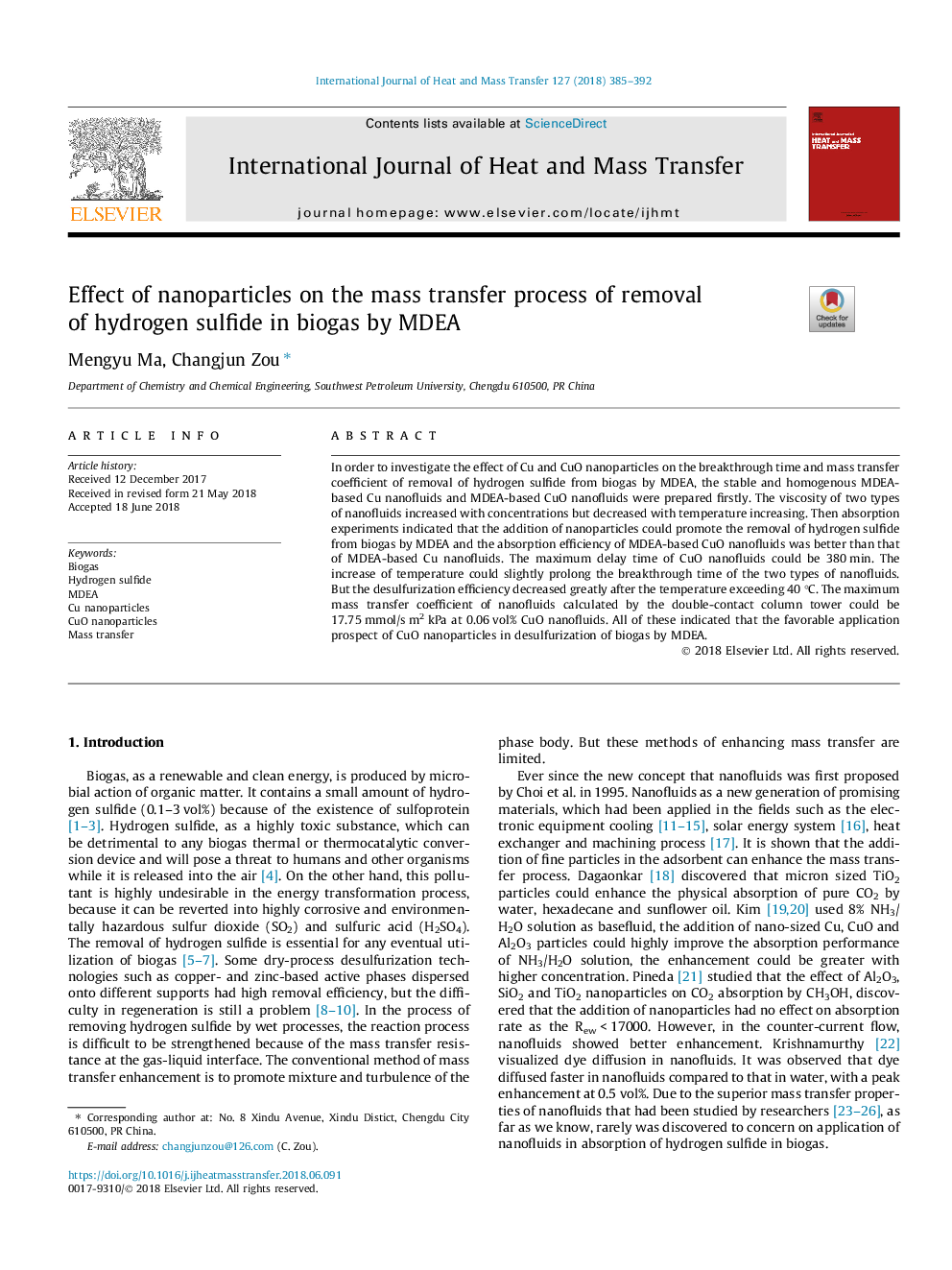| Article ID | Journal | Published Year | Pages | File Type |
|---|---|---|---|---|
| 7053783 | International Journal of Heat and Mass Transfer | 2018 | 8 Pages |
Abstract
In order to investigate the effect of Cu and CuO nanoparticles on the breakthrough time and mass transfer coefficient of removal of hydrogen sulfide from biogas by MDEA, the stable and homogenous MDEA-based Cu nanofluids and MDEA-based CuO nanofluids were prepared firstly. The viscosity of two types of nanofluids increased with concentrations but decreased with temperature increasing. Then absorption experiments indicated that the addition of nanoparticles could promote the removal of hydrogen sulfide from biogas by MDEA and the absorption efficiency of MDEA-based CuO nanofluids was better than that of MDEA-based Cu nanofluids. The maximum delay time of CuO nanofluids could be 380â¯min. The increase of temperature could slightly prolong the breakthrough time of the two types of nanofluids. But the desulfurization efficiency decreased greatly after the temperature exceeding 40â¯Â°C. The maximum mass transfer coefficient of nanofluids calculated by the double-contact column tower could be 17.75â¯mmol/sâ¯m2â¯kPa at 0.06â¯vol% CuO nanofluids. All of these indicated that the favorable application prospect of CuO nanoparticles in desulfurization of biogas by MDEA.
Related Topics
Physical Sciences and Engineering
Chemical Engineering
Fluid Flow and Transfer Processes
Authors
Mengyu Ma, Changjun Zou,
